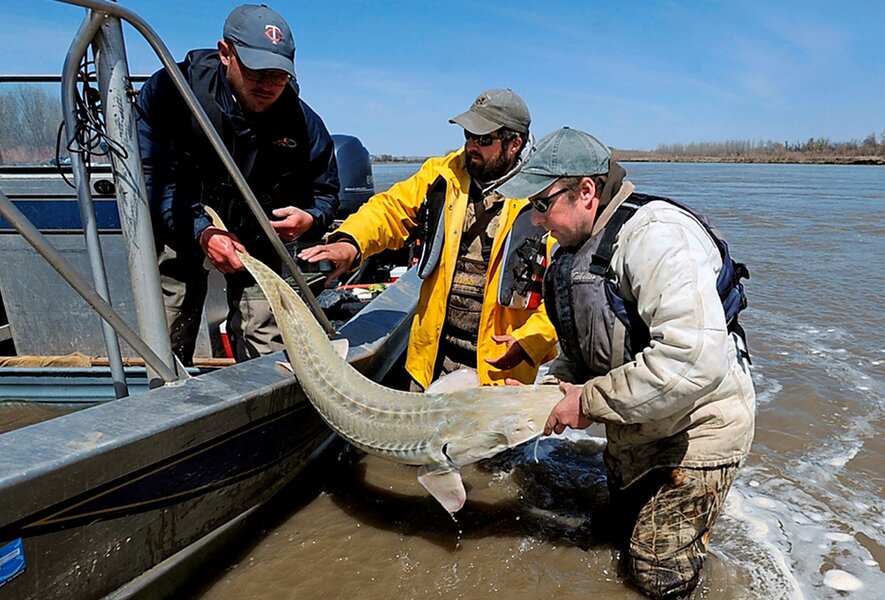Why Yellowstone officials are poisoning its rivers
Loading...
Yellowstone rangers are guardians of America's natural heritage, working tirelessly to protect the human visitors and animals of the country's most famous park.
But later this summer, they will pour poison into a Yellowstone park stream system.
Wildlife officials in lakes and rivers around the country are employing similarly dramatic tactics for killing off unwanted new species as they increase in number, threatening both human activity and the native species they are charged with protecting.
Biologists with Yellowstone National Park will stun and remove the native Yellowstone cutthroat trout from Soda Butte Creek, then fill the creek with rotenone. The poison will kill all of the stream's other inhabitants, especially the other trout species that invaded the park via the stocked streams of Montana's Beartooth Mountains.
Non-native species trouble Yellowstone officials because they grow much larger than the area's other fish, sometimes eating them and harming the native Yellowstone fish.
"The park places a high priority on preservation and recovery of this cutthroat trout population because of its importance in maintaining the integrity of the Greater Yellowstone Ecosystem, arguably the most intact, naturally functioning ecosystem remaining in the continental United States," park officials wrote. "Grizzly bears, bald eagles, and many other avian and terrestrial species use cutthroat trout as an energy source."
Officials will then return the native cutthroat trout to the stream and, if it succeeds, the project will prevent the non-native fish from swimming downstream into the Lamar River. This is Round Two for the brook trout population, which managed to survive a similar poisoning attempt last summer.
It might seem like a radical solution, but it is not a unique tactic. In Red Hills Desert Garden, an endangered fish sanctuary in Utah, officials are actually draining the park's stream dry to try and kill off its own aquatic invaders, The Spectrum reported. Officials have removed 1,000 illegally introduced goldfish in this year alone.
"The illegally-introduced fish outnumber and out-compete our native and endangered fish," Steve Meismer, the coordinator for the Virgin River Program, told The Spectrum. "We're at a point where the only option is to salvage the desired fish and eliminate the others. It's an unfortunate situation."
They will net and remove fish native to Utah, drain the man-made stream system, and then, as in Yellowstone, poison the remaining fish.
Utah's problem likely began with aquarium-dumping, rather than stocking. Lake Tahoe faces a similar problem, as tiny goldfish let loose in the lake have reproduced freely and grown into 18-inch "monster fish." And in the Great Lakes, these goldfish became so plentiful that fisherman began to catch and sell them at a handsome profit.
"We've been catching 'em forever," Dave DeLong, a Lake Erie commercial fisherman, told Michigan Live. "Now, we're selling 'em. It's just another species we can make a few dollars off."
Many non-native species are not so benign. In the Midwest's river system, a non-native carp first introduced to clean out fish farms in the 1970s has taken over. Officials outside Chicago are catching and netting the Asian carp to keep them out of the Great Lakes while the US Army Corps engineers develop a sophisticated "lock-and-dam" system against them.
This report contains material from the Associated Press.








